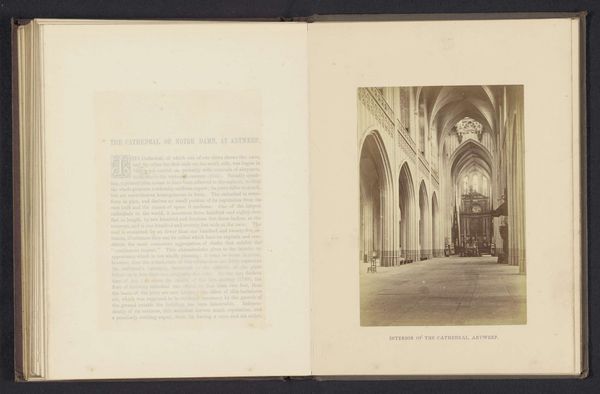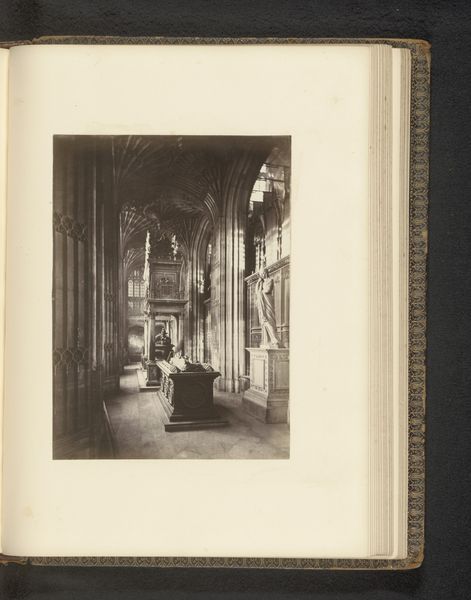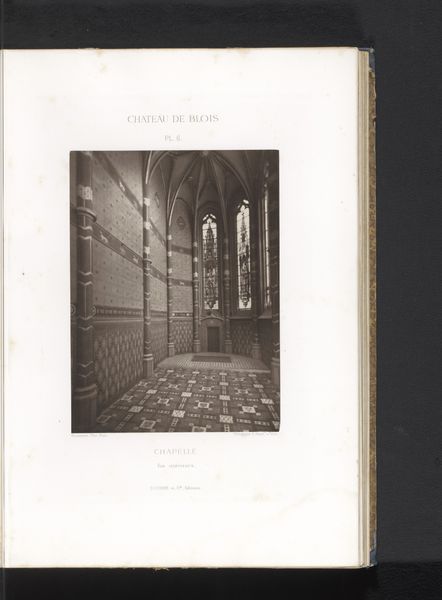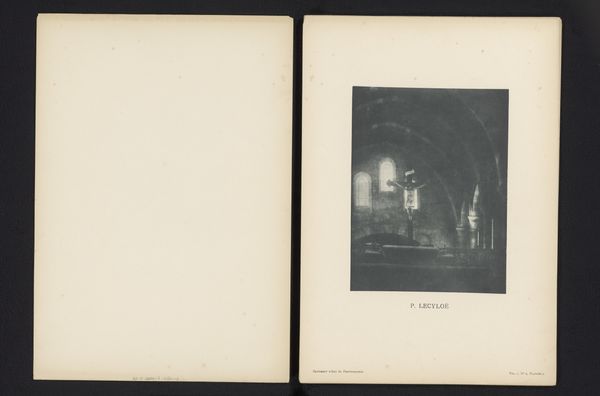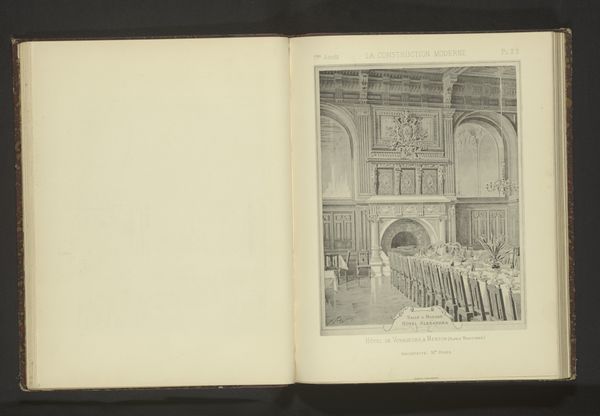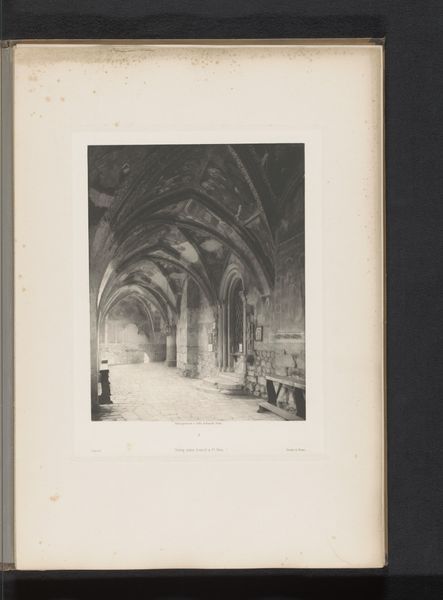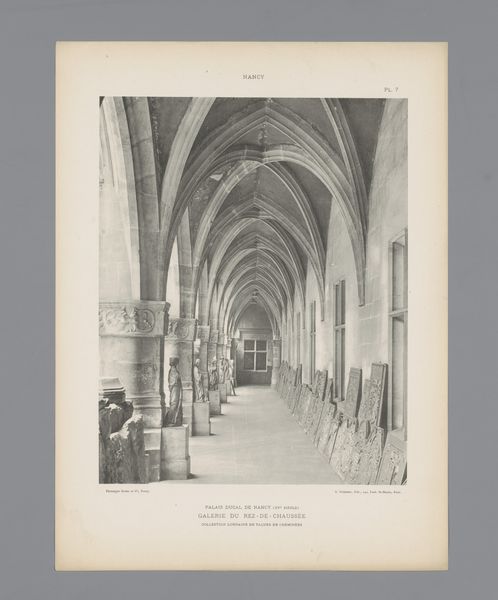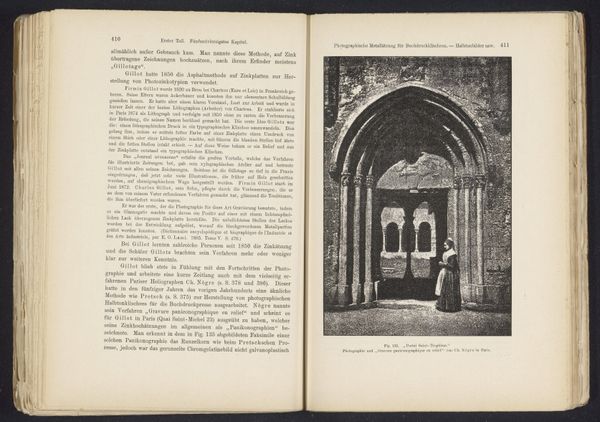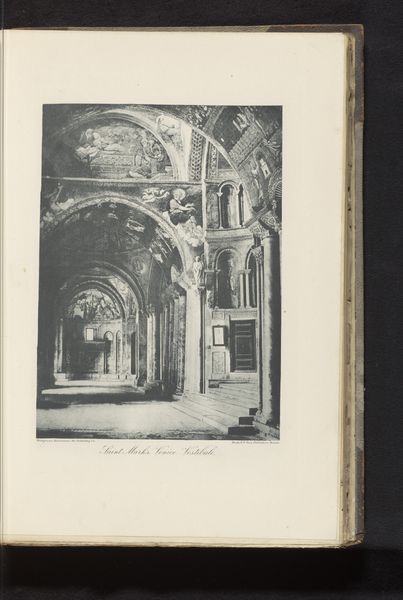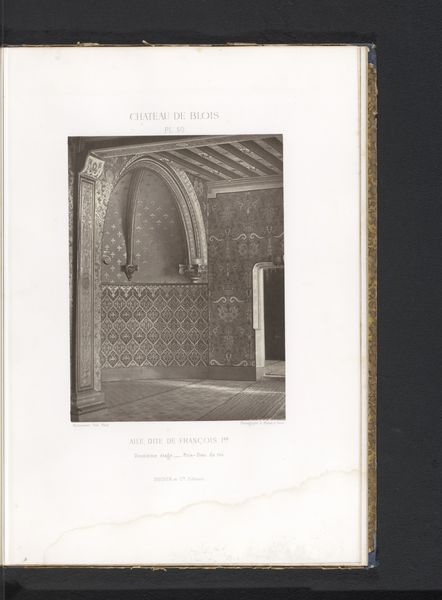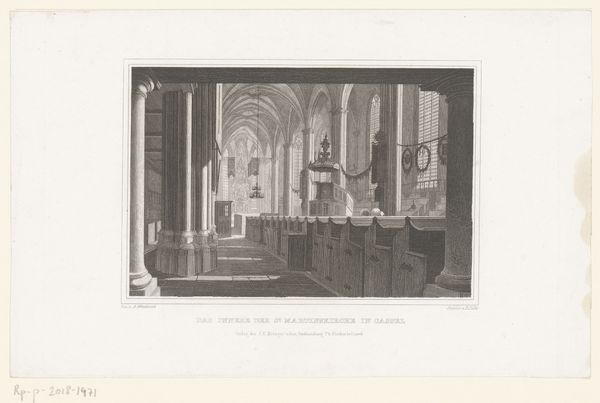
Dimensions: height 150 mm, width 108 mm
Copyright: Rijks Museum: Open Domain
Editor: Here we have "Sacristie" by Joseph Casier, created before 1902. It looks like a gelatin-silver print. There's such a starkness to it, a quiet grandeur. What strikes you when you look at this work? Curator: What immediately comes to mind is the role of religious architecture in shaping social power. How do spaces like this sacristy, with its gothic arches and subtle lighting, project authority? Editor: So you’re thinking about how the building itself communicates something beyond just its function? Curator: Precisely. Consider the historical context: religious institutions often wielded significant social and political control. Architecture, like this, visually reinforced that control, influencing how individuals experienced their place within that hierarchy. Notice how the photograph uses light and shadow to amplify the monumentality. Do you see how the darkness frames the altar, highlighting the sacred space? Editor: I do. It almost feels staged, carefully constructed. Like the photograph is meant to inspire awe, perhaps. Curator: Exactly. Photography in this era wasn’t just about capturing reality, it was about shaping perception. By focusing on spaces like the sacristy, artists and photographers helped to solidify the church's image of power and sanctity in the public consciousness. What do you make of the seemingly empty space? Editor: It adds to the solemn feel, the emptiness amplifying the importance of the space, that this is only for a privileged few. This conversation really made me reconsider photography as more than just documentation! Curator: Indeed, by thinking about historical context, we see how artistic choices become part of a broader cultural narrative about authority and representation.
Comments
No comments
Be the first to comment and join the conversation on the ultimate creative platform.

